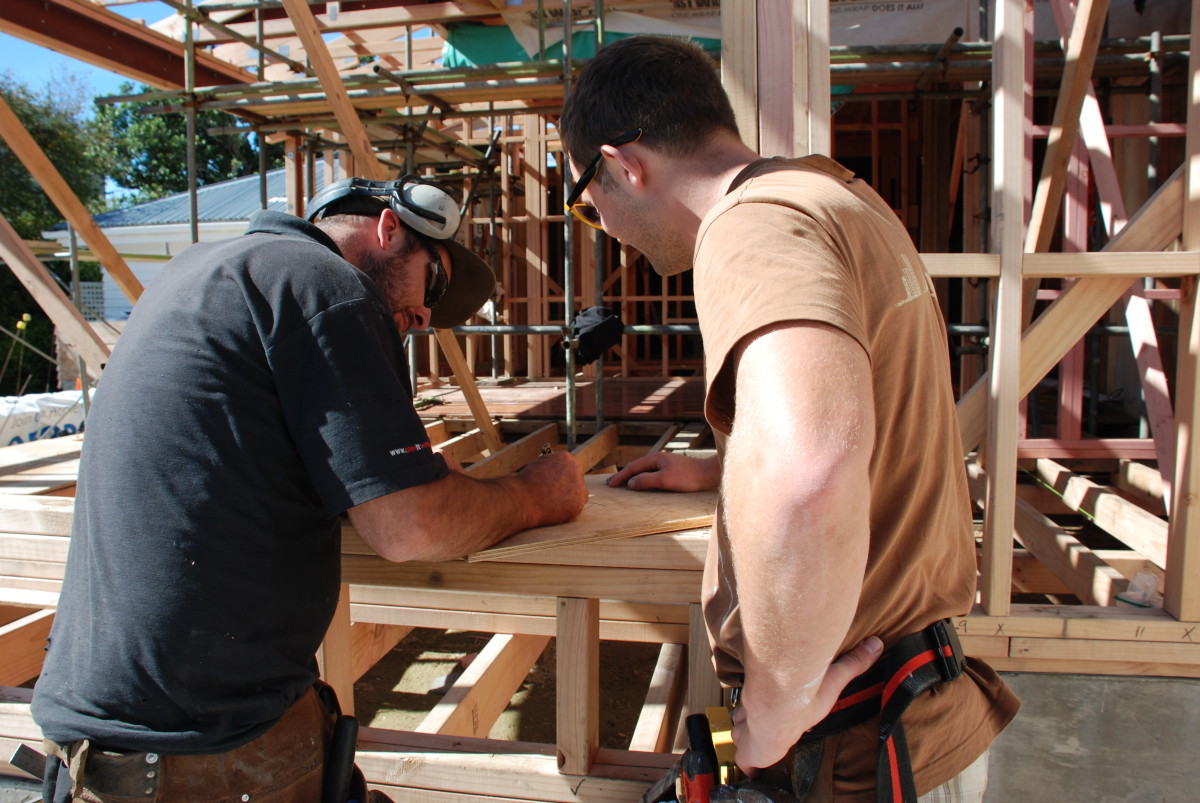New guide to help define defects
16 Jun 2015, Building and housing, Featured, LBP & Regulation, Prove Your Know How

MBIE’s latest guidance aims to resolve common areas of dispute between contractors and homeowners
The Guide to Tolerances, Materials and Workmanship in New Residential Construction is now available. Prepared by the Ministry of Business, Innovation and Employment (MBIE), it aims to assist contractors and homeowners, who may be unsure of what constitutes a defect within the Building Act 2004.
This guide focuses on issues that can lead to disputes between building contractors and homeowners but fall outside the Building Code, contract documentation and manufacturers’ specifications and installation instructions. It outlines what constitutes acceptable levels of workmanship in standard domestic construction types under normal conditions, and is targeted at new residential building work.
Consumer protection measures
The guidance was written with advice from the industry and supports the new consumer protection measures in Part 4A of the Building Act, which came into law on 1 January.
Under the new consumer protection measures, a 12-month defect repair period starts from:
- the completion of the building work under a written contract, or
- the completion of the physical building work in cases where there is no written contract.
During this time, it is the main contractors’ responsibility to fix any defects that they are notified of within a reasonable amount of time, or prove that any defective building work is through no fault of their own, the subcontractors under their control, or the products supplied if there is a dispute.
What’s covered?
The Guide to Tolerances, Materials and Workmanship in New Residential Construction covers mainly aesthetic issues (eg, what is considered a reasonable slope in a floor, or what is an acceptable appearance for a newly painted wall) in new builds and additions at any price, whether or not the consumer protection measures and $30,000 threshold apply.
The guide does not cover tolerances for repairs, renovations, or alterations within existing buildings. Tolerances for existing buildings are likely to be below those achievable with new buildings. There are a number of reasons for this, including the nature of the materials used in existing buildings and the effects of both time and natural events.
The guide is also a great tool to make sure clients understand and agree what acceptable levels of tolerances, materials and workmanship are for new residential building work. It can be used before contracts are signed to help align expectations of quality with choice of design, materials, finishes and costs.
The Guide to Tolerances, Materials and Workmanship in New Residential Construction is not a mandatory set of standards. Contractors and clients can mutually agree to their own expectations, preferably within their written contract.
What is a defect?
The Guide to Tolerances, Materials and Workmanship in New Residential Construction is concerned with defects that fall within section 362Q of the Building Act (ie, those that a contractor would be required to remedy within a reasonable amount of time if notified within one year of completion of the building work). A defect can be defined in a number of ways, including:
- Non-compliance with the Building Code.
- Non-agreed variations from consented drawings.
- Failure to meet agreed contractual specifications.
- Premature product failure.
- This guide focuses on failure to achieve acceptable industry levels of quality or performance on items not covered by the first four bullet points.
What constitutes a defect will change over time with fair wear and tear, settlement, weathering, and ageing of materials. Therefore, what may be a defect at handover may not constitute a defect after 12 months. For example, deep scratching to a polished wood floor is a defect at handover, but may not be several months later due to fair wear and tear.
If the owner believes they have identified a defect, they should talk to their building contractor in the first instance about the issue and how to resolve it.
If the contract, specifications and consent documentation do not provide sufficient information to enable the owner and building contractor to agree, the issue may be covered by an existing New Zealand Standard, industry code of practice or this guide. Where an issue is raised that is not covered by any of these sources of information, professional advice may be needed to establish if the issue is a defect and how it should be rectified.
If the defect is suspected or known to be a Building Code compliance issue, the next step should be to contact the relevant council that issued the building consent or code compliance certificate. For issues relating to the contract, seek independent legal advice. It is common for variations (both minor and major) to occur during a construction project. It is important the owner’s instructions or agreement to variations proposed by the designer or building contractor are recorded, to avoid differences in expectations and potential disputes.
While the building contractor is required to remedy defects notified within one year of completion of the building work, the building contractor is able to pursue the usual routes of redress for faulty products or sub-standard workmanship of subcontractors. However, section 362M of the Building Act requires defects to be remediated within a reasonable amount of time.
Find out more about the consumer protection measures at doyourhomework.co.nz, and download your copy of Guide to Tolerances, Materials and Workmanship in New Residential Construction at www.building.govt.nz/guide-to-tolerances.
Register to earn LBP Points Sign in



